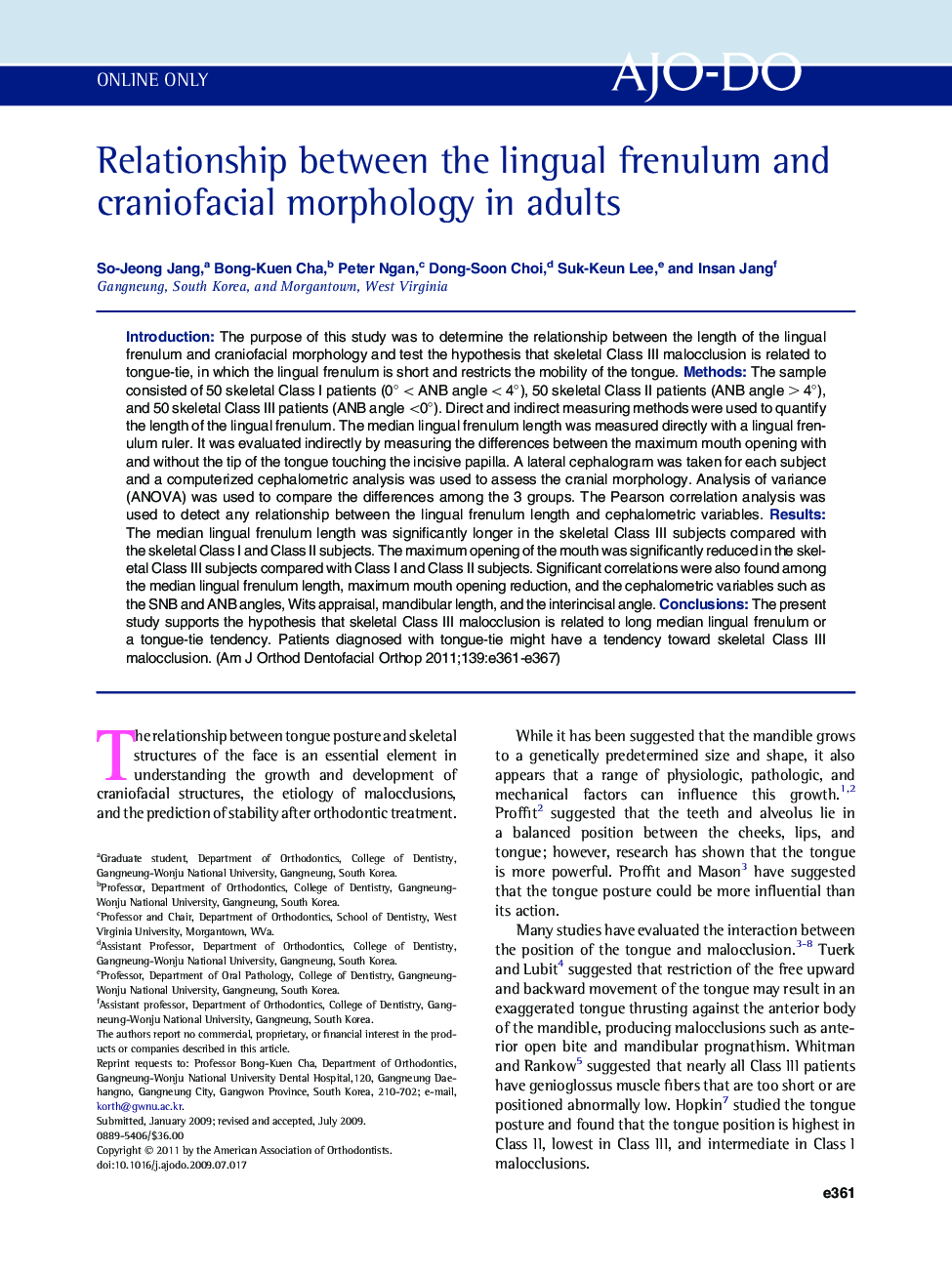| کد مقاله | کد نشریه | سال انتشار | مقاله انگلیسی | نسخه تمام متن |
|---|---|---|---|---|
| 3118960 | 1582743 | 2011 | 7 صفحه PDF | دانلود رایگان |

IntroductionThe purpose of this study was to determine the relationship between the length of the lingual frenulum and craniofacial morphology and test the hypothesis that skeletal Class III malocclusion is related to tongue-tie, in which the lingual frenulum is short and restricts the mobility of the tongue.MethodsThe sample consisted of 50 skeletal Class I patients (0° < ANB angle < 4°), 50 skeletal Class II patients (ANB angle > 4°), and 50 skeletal Class III patients (ANB angle <0°). Direct and indirect measuring methods were used to quantify the length of the lingual frenulum. The median lingual frenulum length was measured directly with a lingual frenulum ruler. It was evaluated indirectly by measuring the differences between the maximum mouth opening with and without the tip of the tongue touching the incisive papilla. A lateral cephalogram was taken for each subject and a computerized cephalometric analysis was used to assess the cranial morphology. Analysis of variance (ANOVA) was used to compare the differences among the 3 groups. The Pearson correlation analysis was used to detect any relationship between the lingual frenulum length and cephalometric variables.ResultsThe median lingual frenulum length was significantly longer in the skeletal Class III subjects compared with the skeletal Class I and Class II subjects. The maximum opening of the mouth was significantly reduced in the skeletal Class III subjects compared with Class I and Class II subjects. Significant correlations were also found among the median lingual frenulum length, maximum mouth opening reduction, and the cephalometric variables such as the SNB and ANB angles, Wits appraisal, mandibular length, and the interincisal angle.ConclusionsThe present study supports the hypothesis that skeletal Class III malocclusion is related to long median lingual frenulum or a tongue-tie tendency. Patients diagnosed with tongue-tie might have a tendency toward skeletal Class III malocclusion.
Journal: American Journal of Orthodontics and Dentofacial Orthopedics - Volume 139, Issue 4, Supplement, April 2011, Pages e361–e367